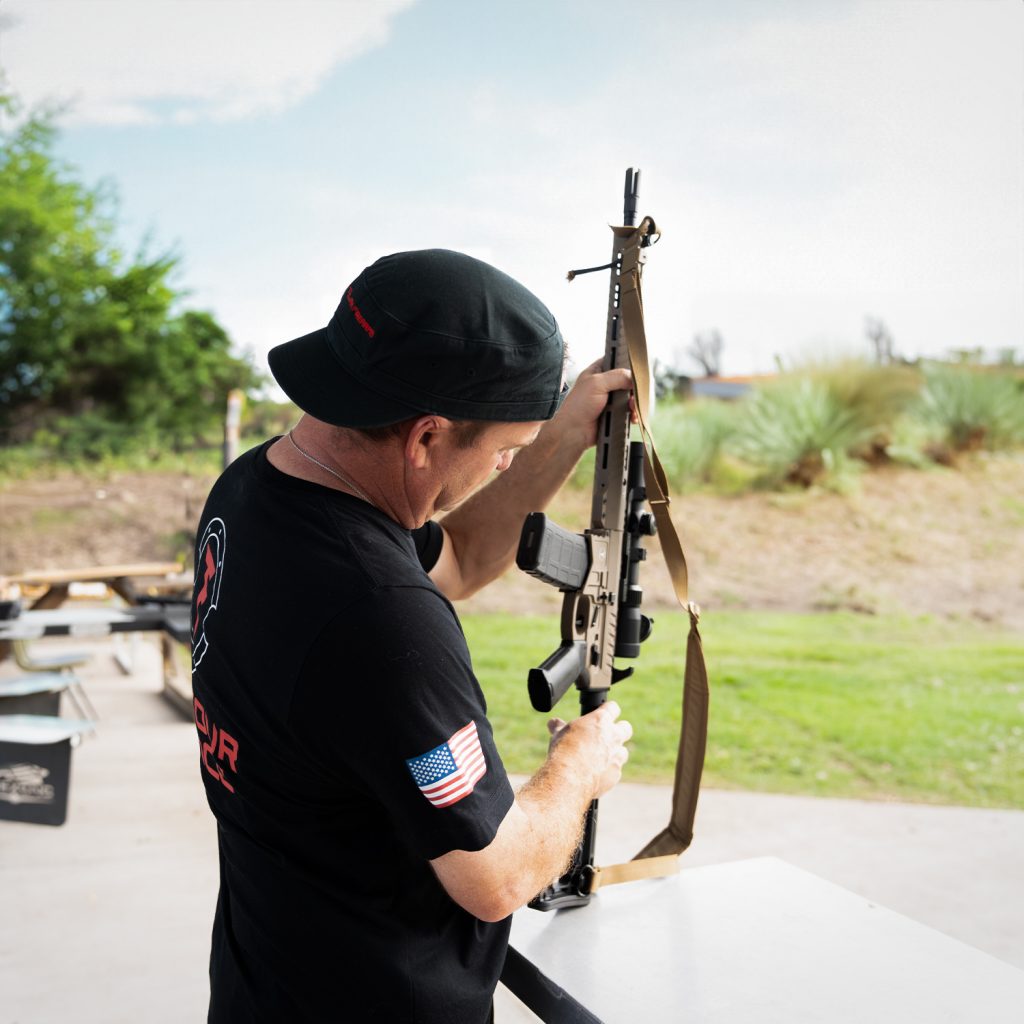It goes without saying that in order to be a responsible gun owner, understanding the importance of firearm safety is pivotal. However, beyond handling firearms safely, proper maintenance is crucial for ensuring their longevity and performance. In this comprehensive guide, we’ll be delving into why regular firearm maintenance is essential and provide you with detailed tips and techniques to always keep your TFA rifles in top condition.

Doing right by your rifle
Firearms are precision-focused tools that require regular care and maintenance to function reliably and safely. By keeping a strong maintenance routine, you not only ensure the safe operation of your firearm but also help prevent malfunctions and accidents.
Keep in mind that there are various parts & components that make up the build of your TFA rifle, each with its own specifications that require upkeep. So by understanding these components, you can develop a comprehensive maintenance routine to keep them and your overall rifle in optimal condition.
High-Caliber Clean Up
Cleaning your firearms regularly is perhaps the most fundamental and most critical aspect of maintenance. To clean your firearm effectively, follow these steps:
- Disassembling Your Firearm: Start off by disassembling your firearm according to the manufacturer’s instructions. This will allow you to access all parts of the firearm for a more thorough cleaning.
- Finding the Right Cleaning Solution: You can find cleaning solutions geared for firearms in your respective gun stores or you can buy them online. By using a high-quality firearm cleaning solution/ solvent, you can remove any fouling, debris, and corrosion from the barrel and any other part of the firearm.
- Getting the Proper Cleaning Tools: Invest in a good quality cleaning kit that includes a bore brush, cleaning rod, patches, and cleaning brushes. These tools will help you reach and clean hard-to-get areas and ensure a thorough cleaning.
- Post-Cleaning Lubrication: After you have completed cleaning out your rifle, apply a light coat of firearm lubricant to key components such as the slide rails, bolt carrier group, and the trigger mechanism. This will help reduce possible friction and prevent corrosion.
Running a Smooth Operation
To keep your firearm running smoothly, the primary point of interest is the proper lubrication procedure. Proper lubrication is essential for reducing friction between moving parts and preventing corrosion. To lubricate your firearm effectively, follow these tips:
- Choosing the Right Lubricant: Select a high-quality firearm lubricant that is specifically designed for the particular model of your firearm. Different firearms may require different types of lubricants, so it’s essential to take the time to choose the right one for your firearm.
- Applying the Lubricant: Apply lubricant sparingly to key components such as the slide rails, bolt carrier group, and trigger mechanism. You should avoid over-lubricating, as this can attract dirt and debris and lead to further malfunctions.
- Keeping Regular Maintenance: Establish a regular lubrication schedule based on the usage of your firearm as well as the overall environmental conditions in which you carry them. Check your firearm regularly for any signs of wear or corrosion and reapply lubricant as needed.
 Inspecting and Troubleshooting Your Firearm
Inspecting and Troubleshooting Your Firearm
Regular inspections play a crucial role in detecting and addressing potential issues before they escalate. Here are some guidelines for effectively inspecting and troubleshooting your firearm:
- Visually Inspecting Your Firearm: Inspect your firearm visually for signs of wear, damage, or malfunction. Look for any cracks, dents, or rust on the exterior of the firearm.
- Checking the Rifle’s Functionality: When in a safe environment, perform a functional check of your firearm to ensure that all parts are working correctly. Check the action, trigger, safety, and magazine release for smooth operation.
- Test Firing Your Firearm: If possible, test fire your firearm after cleaning and lubricating to ensure that it functions properly. Pay attention to any unusual sounds or malfunctions during firing.
Finding that Ideal Safe Space
Establishing a proper storage space is essential for protecting your firearms from damage and unauthorized access. Consider the following when storing your firearms safely:
- Finding a Safe Storage for Your Firearm: Store your firearms in a secure location such as a gun safe, cabinet, or case when not in use. Ensure that the storage area is inaccessible to unauthorized individuals, especially children and unauthorized users.
- Regulating Environmental Factors: Control environmental factors such as humidity and temperature to prevent rust and weathering. Consider using a dehumidifier or desiccant to maintain optimal humidity levels in your storage area.
- Long-Term Storage for Your Firearm: If you plan to store your firearms for an extended period, take extra precautions to protect them from damage. Apply a light coat of firearm lubricant to prevent corrosion, and periodically inspect your firearms for signs of wear or malfunction.

If you wish to explore in-depth on how to conduct a proper maintenance routine for your TFA rifle, you can refer to our comprehensive user manual.
Proper firearm maintenance is not just about keeping your firearms clean; it’s about ensuring their safety, reliability, and longevity as well as the safety of those around you when carrying. By incorporating regular maintenance into your routine and following the tips and techniques outlined in this guide, you can enjoy a lifetime of shooting enjoyment with your TFA firearm while also prioritizing safety and responsibility.


